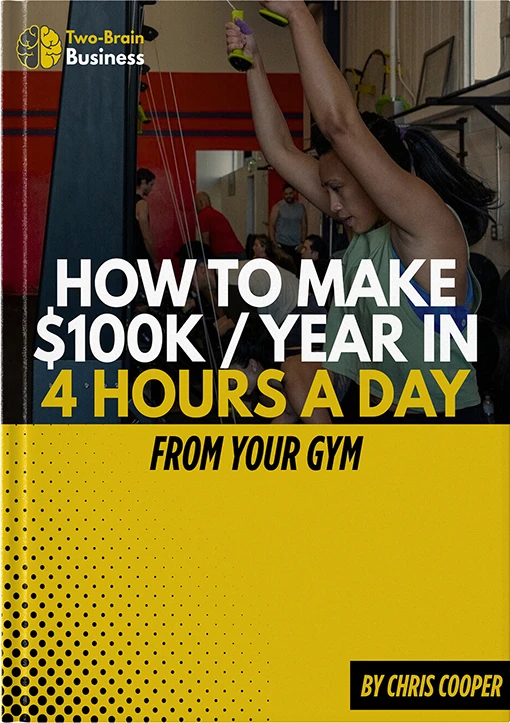Here’s a question you should never ask in a sales consultation:
“How can I help you?”
Why are you asking prospective clients to solve their own problems?
You’re the expert, right?
It’s your job to tell people how you can help them, and you can only do that if you ask the right questions.

Two-Brain teaches gym owners to use the Prescriptive Model, which has been proven to improve retention and increase revenue and average revenue per member.
The key element of the whole model is this: You tell people how to accomplish their goals; i.e., you provide a prescription.
The concept is most obvious in the medical world.
“I have an itchy rash.”
“It will go away if you get this exact cream and apply it twice a day to the affected area.”
It appears in other realms:
“I’m losing a lot of investment income to taxes.”
“You can keep more of it by using this exact tax-advantaged account.”
If you apply the same approach within your scope of practice as a fitness expert, you will set yourself apart in the market, make more sales and help clients get better results.
You starting point is ditching “how” questions and using “what” and “why” questions instead.
Clients supply the what and why, and you supply the how.
What and Why Questions
Here’s the right first question in a free consultation: “What led you to our gym?”
That question will produce the client’s goal: “I want to get stronger.”
It’s tempting to toss a prescription in right here. But real pros will ask three or four why questions first.
“Why do you want to accomplish that goal?”
“I want to apply for a new job, and it says I have to be able to lift 50 lb. regularly.
“Why is that important to you?”
“I’m stuck in a dead-end job.”
“Why will that make a difference?”
“Well, the job I want is an entry-level position, but it says it has a lot of opportunities for advancement. If I can get in the door, I’m certain I can get into a management role within a year and double my income.”
“Why will that matter?”
“I want to be able to take my kid to Disney World for his 10th birthday. It’s in 18 months.”
This is called “motivational interviewing,” and it produces far more information than “how can I help you?”
At that point, you go into full expert mode. You’re going to take a measurement of some sort to determine a starting point, then lay out an exact path to get the client to the goal.
Here’s a simple example:
“What can you lift right now?”
“Well, one 25-lb. bag of dog food is OK, but I definitely can’t lift two at once.”
“Got it. We know you can deadlift about 25 lb. comfortably, so we’ll want to get to a 100-lb. deadlift so 50-lb. boxes are a breeze. This is a very achievable goal with coaching. I bet you want to apply for that job sooner rather than later, so speed is a priority. The fastest path to a 100-lb. deadlift is personal training with me three times a week.”
And out comes the pricing binder.
I won’t go further—the entire Prescriptive Model is laid out in great detail here.
This process will set you apart as a true fitness pro, make it easier to close sales (and sales of high-value services), and help clients get the results they want much faster.
The point for today:
The expert provides the how after asking the right questions to obtain the what and why from the client.
Don’t ask how you can help. Ask what clients want to accomplish and why. Then supply the help: an exact plan that will help them accomplish their goals.

